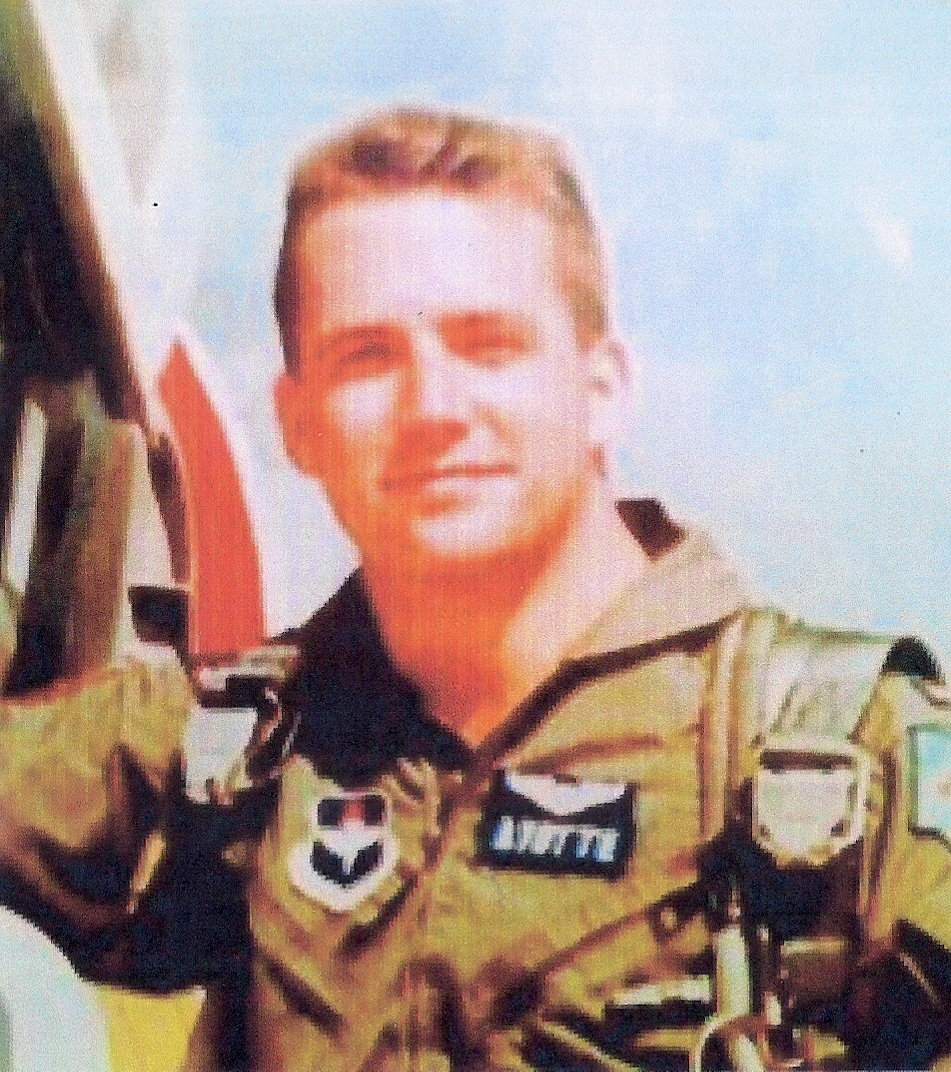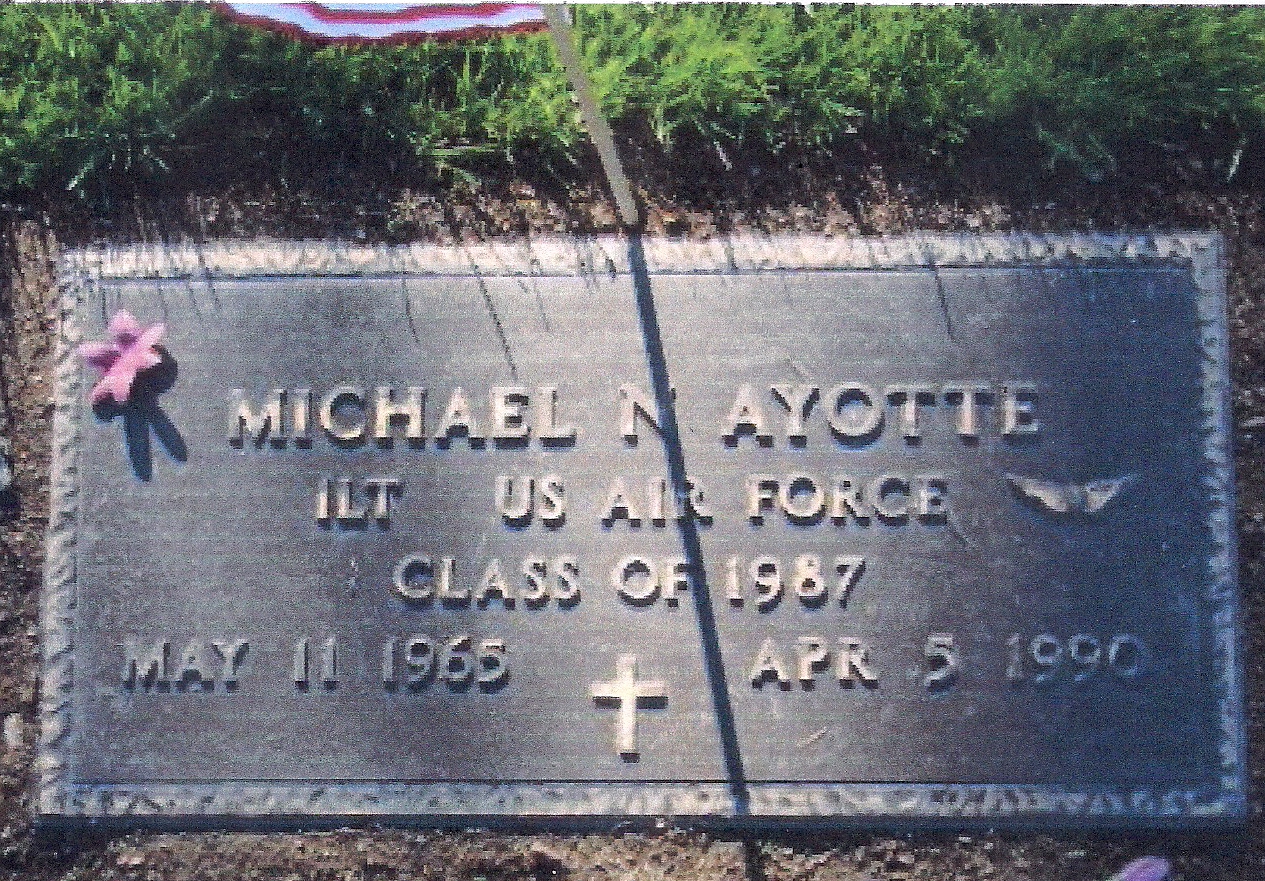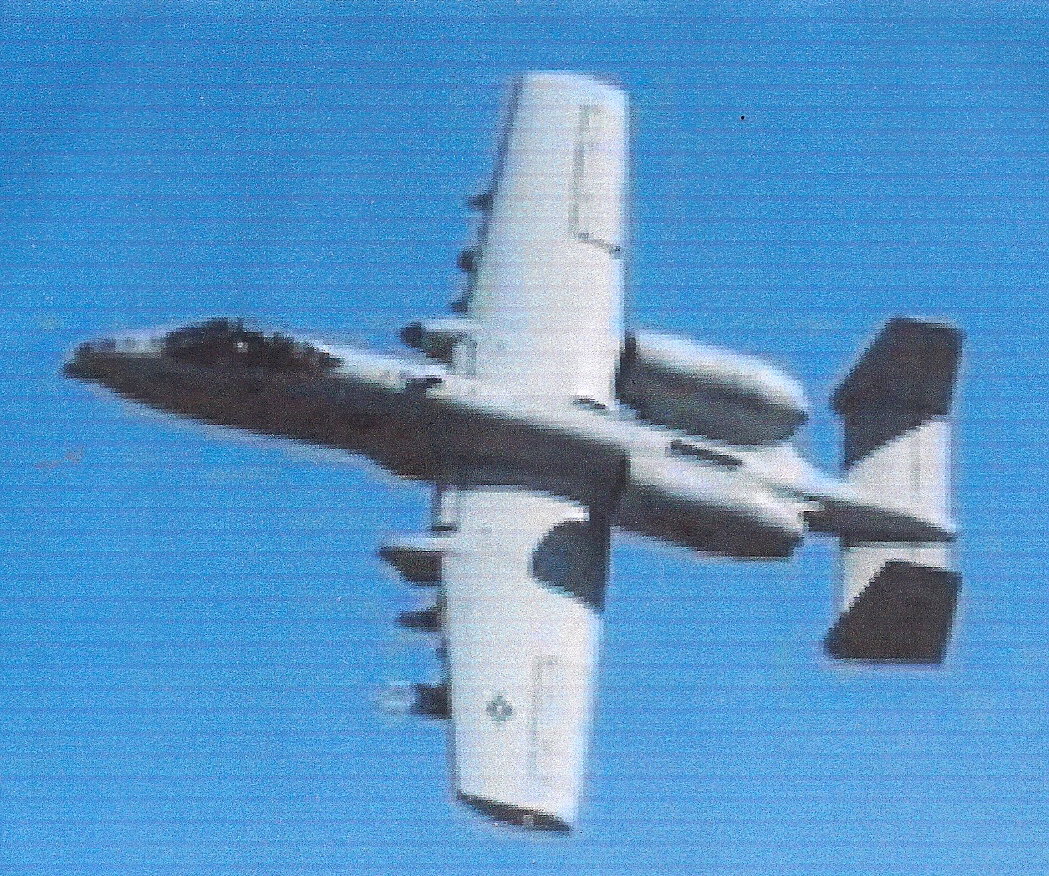IN REMEMBRANCE OF LIEUTENANT MICHAEL AYOTTE USAF
BY RICKEY ROBERTSON
Since 1964 the United States Air Force has had use of the Peason Ridge Bomb and Gunnery Range located in Natchitoches, Sabine, and Vernon Parishes. In 1964 the U.S. Air Force began to build targets for both bombing and strafing on Peason Ridge. They also began to build a compound located at Eagle Hill, the second highest elevation in Louisiana for the site of a portable small forward air controller building where the combat controllers could clear the incoming aircraft onto the range. And in later years the Air Force had personnel and contractors who scored both bombing and strafing missions and acted as air controllers. They controlled all the flights of USAF aircraft coming onto the bombing range and advised the flights of any changes in their mission. Over the years many various types of aircraft conducted operations at Peason Ridge, from F-4 Phantom jets, F-100 Super Sabers, C-47 Spooky gunships, to A-7 Corsairs, and in later years A-10 Thunderbolt II jets. A special training ground for aircraft pilots and aircrews.
One of the first USAF units to receive the new A-10 Thunderbolt II aircraft was the 23rd Tactical Fighter Wing located at England Air Force Base in Alexandria, La. This was a famous unit that had been formed and served with General Claire Chennault in China during World War II. The new A-10s had the famous shark's teeth painted on the nose of the aircraft and they were again known as the "Flying Tigers." The A-10s, an attack aircraft, were a different type of aircraft, but most of all they could provide ground support to all types of American military units. The A-10s could fly very low and very slow and could knock out all types of targets, from bunkers, ground troops, and armored vehicles. And with two engines they could fly with only one engine in the event one engine went out. And with both a mini-gun in the nose and options for both missiles and bombs on the wings it was a formidable aircraft.
The squadrons of the 23rd TFW at England Air Force Base flew to both Peason Ridge and Camp Claiborne for training missions and bombing and strafing missions. On April 5, 1990 a flight of 2 A-10s called in to Eagle Hill Air Force Station on Peason Ridge for instructions and were advised "the range is hot" meaning that the range was open for them to conduct combat training bombing and strafing missions. Both of my brothers, who worked for the USAF, were on duty at Eagle Hill on April 5, 1990. The aircraft made a several passes and flew from the area westward to allow another flight to enter the Peason Ridge Airspace. One of these A10s was piloted by 1st Lieutenant Michael N. Ayotte and as it flew toward Florien, La. it encountered some type of trouble. The A-10 crashed between Florien, La. and Negreet, La. and Lt. Ayotte was killed in this crash. Immediately England Air Force Base was notified and Peason Ridge Range was declared "cold" so that no incoming aircraft would be in the area.
The Tactical Air Command sent a seven man investigation team to the crash site located in Sabine Parish, La. to find the possible cause of the crash. The team was made up of Air Force personnel for many various bases and had complete access to the crash site. As I write this story I do not know what the complete report contained about the cause of the crash.
1st Lieutenant Michael N. Ayotte, age 24, was a 1987 graduate of the United States Air Force Academy and was assigned at the time of the crash to the 75th Tactical Fighter Squadron of the 23rd Tactical Fighter Wing at England Air Force Base. He was from Bexar County, TX. A memorial service was held on April 11, 1990 for Lt. Ayotte at the England Air Force Base Chapel and on April 17, 1990 funeral services were conducted in the United States Air Force Academy Chapel in Colorado Springs, Co. with burial conducted in the Air Force Academy Cemetery.
The years have passed by and it is now twenty-nine years since this crash in which Lt. Ayotte was lost. As I spoke with my brothers about the missions on April 5, 1990 they remembered radioing other 75th TFS aircraft that were in-bound to Peason Ridge to abort the mission. Until England Air Force Base closed in the early 1990s A-10s were seen continuously throughout our area. And many times with their ordnance expended they would fly up and down Toledo Bend Lake and would line up on vehicles crossing Pendleton Bridge. Readers you may have been a simulated target as you crossed the bridge! But let us remember the sacrifice made by Lt. Ayotte in the crash of the A-10. Several possibilities exist on the crash and often are spoken of. Why did he not eject out of the plane? Why did the plane crash in a wooded area away from any populated area? Most folks think that Lt. Ayotte kept the aircraft flying away from any populated area to prevent civilian casualties and possibility was too low to eject. Another brave American airman who lost his life while in the service of our great nation. Yes, even while conducting realistic combat training many of America's sons and daughters are killed. Remember and honor them.
Let us remember the name of 1st Lieutenant Michael N. Ayotte, the brave A-10 Flying Tiger pilot who lost his life here in Sabine Parish on April 5, 1990. America remembers its heroes and Lt. Ayotte is one of our heroes.


